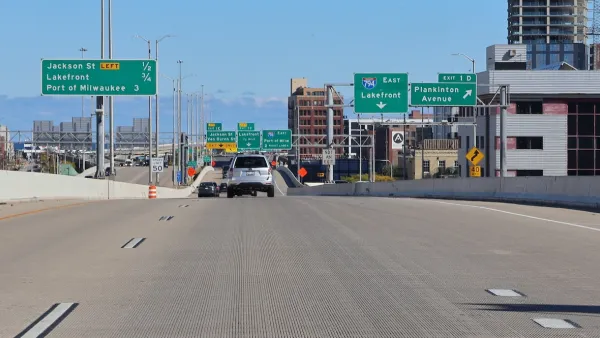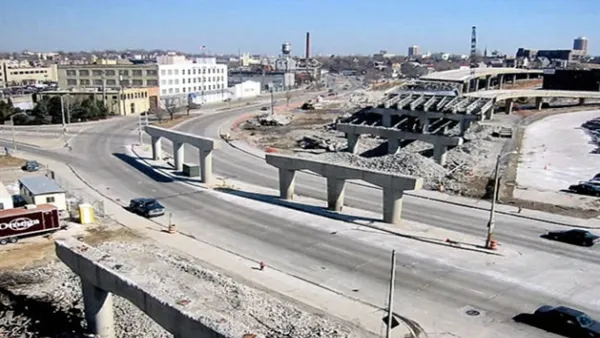Many people know Milwaukee as the Algonquin translation for “The Good Land.” But unfortunate changes in the water table underneath the city now make Milwaukee the sinking city. Experts disagree why.
Michael Horne details the ongoing trouble in Milwaukee to save buildings and streets that are sinking due to the retreating size of the water table underneath the city.
“The problem begins with Milwaukee’s marshy base: it was built on marshland that bordered its three rivers. The entire Third Ward and nearly three-fourths of Downtown stands on a swamp. Although it was filled in with dirt and garbage and the like, underneath it, water still flowed.”
“Most of the substantial buildings in old Milwaukee (some erected as late as the 1940s) were constructed on foundations of wooden pilings pounded into the earth, often by Edward E. Gillen Co. The pilings would extend through the filled-in dirt into the ample water table about 10 feet beneath grade and then into the swampy soil found beneath that. The pilings were expected to remain submerged and be sound for centuries.”
But as the water table has retreated, the pilings of many buildings in Old Milwaukee have been exposed to the air and decay. According to Horne, “the technical term is ‘pile rot.’”
“The latest casualty is the 1904 structure at 734 N. 4th St., with an assessed value of nearly $1.7 million”
Some blame the Deep Tunnel (a 28.5-mile sewage and stormwater tunnel that runs 135-300 feet below the city) for the problem. “The Deep Tunnel is divided into three sections that extend from Downtown, giving this part of the city great exposure to its effect on the groundwater. The tunnel is so porous that huge amounts of water from the old marsh are seeping into it each day, lowering the water table and exposing the old buildings’ supportive timbers to pile rot,” writes Horne.
The Milwaukee Metropolitan Sewerage District argues that downtown Milwaukee has been overloaded with too many buildings, with uncapped, underground wells causing the problem.
FULL STORY: The Sadly Sinking City

Analysis: Cybertruck Fatality Rate Far Exceeds That of Ford Pinto
The Tesla Cybertruck was recalled seven times last year.

National Parks Layoffs Will Cause Communities to Lose Billions
Thousands of essential park workers were laid off this week, just before the busy spring break season.

Retro-silient?: America’s First “Eco-burb,” The Woodlands Turns 50
A master-planned community north of Houston offers lessons on green infrastructure and resilient design, but falls short of its founder’s lofty affordability and walkability goals.

Test News Post 1
This is a summary

Analysis: Cybertruck Fatality Rate Far Exceeds That of Ford Pinto
The Tesla Cybertruck was recalled seven times last year.

Test News Headline 46
Test for the image on the front page.
Urban Design for Planners 1: Software Tools
This six-course series explores essential urban design concepts using open source software and equips planners with the tools they need to participate fully in the urban design process.
Planning for Universal Design
Learn the tools for implementing Universal Design in planning regulations.
EMC Planning Group, Inc.
Planetizen
Planetizen
Mpact (formerly Rail~Volution)
Great Falls Development Authority, Inc.
HUDs Office of Policy Development and Research
NYU Wagner Graduate School of Public Service




























